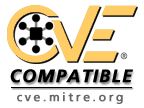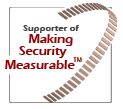Improper Cross-boundary Removal of Sensitive Data |
| Weakness ID: 212 (Weakness Base) | Status: Incomplete |
Description Summary
Extended Description
Resources that may contain sensitive data include documents, packets, messages, databases, etc. While this data may be useful to an individual user or small set of users who share the resource, it may need to be removed before the resource can be shared outside of the trusted group. The process of removal is sometimes called cleansing or scrubbing.
For example, software that is used for editing documents might not remove sensitive data such as reviewer comments or the local pathname where the document is stored. Or, a proxy might not remove an internal IP address from headers before making an outgoing request to an Internet site.
| The terms "cleansing" and "scrubbing" have multiple uses within computing. In information security, these are used for the removal of sensitive data, but they are also used for the modification of incoming/outgoing data so that it conforms to specifications. |
| Scope | Effect |
|---|---|
Confidentiality | Sensitive data may be exposed to an unauthorized actor in another control sphere. This may have a wide range of secondary consequences which will depend on what data is exposed. One possibility is the exposure of system data allowing an attacker to craft a specific, more effective attack. |
| Reference | Description |
|---|---|
| CVE-2005-0406 | Some image editors modify a JPEG image, but the original EXIF thumbnail image is left intact within the JPEG. (Also an interaction error). |
| CVE-2002-0704 | NAT feature in firewall leaks internal IP addresses in ICMP error messages. |
Phase: Requirements Clearly specify which information should be regarded as private or sensitive, and require that the product offers functionality that allows the user to cleanse the sensitive information from the resource before it is published or exported to other parties. |
Phase: Architecture and Design Compartmentalize your system to have "safe" areas where trust boundaries can be unambiguously drawn. Do not allow sensitive data to go outside of the trust boundary and always be careful when interfacing with a compartment outside of the safe area. |
Phase: Implementation Use naming conventions and strong types to make it easier to spot when sensitive data is being used. When creating structures, objects, or other complex entities, separate the sensitive and non-sensitive data as much as possible. |
Phase: Implementation Avoid errors related to improper resource shutdown or release (CWE-404), which may leave the sensitive data within the resource if it is in an incomplete state. |
| Nature | Type | ID | Name | View(s) this relationship pertains to |
|---|---|---|---|---|
| ChildOf |  Weakness Class Weakness Class | 200 | Information Exposure | Development Concepts (primary)699 Research Concepts (primary)1000 |
| ChildOf |  Weakness Class Weakness Class | 669 | Incorrect Resource Transfer Between Spheres | Research Concepts1000 |
| ChildOf |  Category Category | 808 | 2010 Top 25 - Weaknesses On the Cusp | Weaknesses in the 2010 CWE/SANS Top 25 Most Dangerous Programming Errors (primary)800 |
| CanAlsoBe |  Weakness Base Weakness Base | 226 | Sensitive Information Uncleared Before Release | Research Concepts1000 |
| This entry is intended to be different from resultant information leaks, including those that occur from improper buffer initialization and reuse, improper encryption, interaction errors, and multiple interpretation errors. This entry could be regarded as a privacy leak, depending on the type of information that is leaked. |
| There is a close association between CWE-226 and CWE-212. The difference is partially that of perspective. CWE-226 is geared towards the final stage of the resource lifecycle, in which the resource is deleted, eliminated, expired, or otherwise released for reuse. Technically, this involves a transfer to a different control sphere, in which the original contents of the resource are no longer relevant. CWE-212, however, is intended for sensitive data in resources that are intentionally shared with others, so they are still active. This distinction is useful from the perspective of the CWE research view (CWE-1000). |
| Mapped Taxonomy Name | Node ID | Fit | Mapped Node Name |
|---|---|---|---|
| PLOVER | Cross-Boundary Cleansing Infoleak |
| Submissions | ||||
|---|---|---|---|---|
| Submission Date | Submitter | Organization | Source | |
| PLOVER | Externally Mined | |||
| Modifications | ||||
| Modification Date | Modifier | Organization | Source | |
| 2008-07-01 | Eric Dalci | Cigital | External | |
| updated Time of Introduction | ||||
| 2008-09-08 | CWE Content Team | MITRE | Internal | |
| updated Relationships, Other Notes, Taxonomy Mappings | ||||
| 2008-10-14 | CWE Content Team | MITRE | Internal | |
| updated Description | ||||
| 2009-10-29 | CWE Content Team | MITRE | Internal | |
| updated Description, Other Notes, Relationship Notes | ||||
| 2009-12-28 | CWE Content Team | MITRE | Internal | |
| updated Name | ||||
| Previous Entry Names | ||||
| Change Date | Previous Entry Name | |||
| 2009-12-28 | Cross-boundary Cleansing Information Leak | |||





